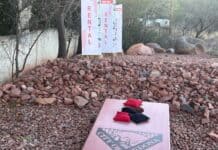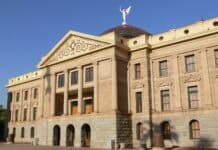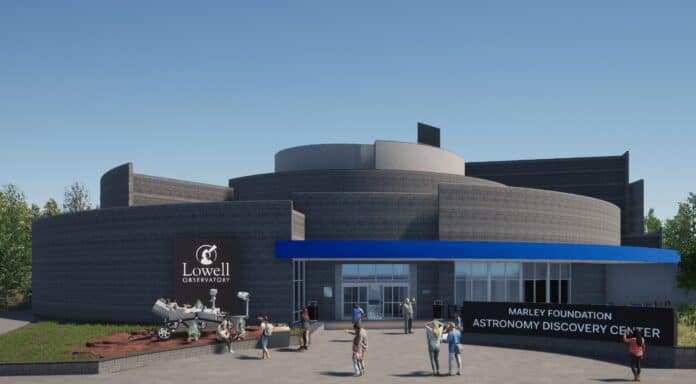
Lowell Observatory in Flagstaff is set to open its new 40,000-square-foot, $53 million Marley Foundation Astronomy Discovery Center on Saturday, Nov. 16.
The ribbon-cutting is set for 10:30 a.m. and the facility will officially open at 11 a.m. Dignitaries present will include author Diana Gabaldon, International Space Station astronaut Nicole Stott, state and local dignitaries, representatives of Lowell and astronomers who work both day and night, taking photos of the night sky so we can learn more about our planet, our solar system, the Milky Way and the vast infinite beyond.
Astronomy Discovery Center The facility has been under construction since June 2021, and after it opens, it will serve as a public astronomy center as well as a destination hub for astrotourism in Northern Arizona.
Lowell already opened the Giovale Open Deck Observatory on Oct. 5, 2019, with the Discovery Center intended as the next phase of its master plan. When the COVID-19 pandemic response limited access to indoor facilities and group gatherings, Lowell staff closed the main Steele Visitor Center, turning the large outdoor GODO space into Lowell’s de facto visitor destination.

Christopher Fox Graham/Larson Newspapers
Lowell Observatory historian Kevin Schindler says Lowell staff consider the GODO an “appetizer” and the Discovery Center as the “main course.” The Discovery Center is connected to the GODO by a short path, but due to lighting restrictions to prevent interference with the telescopes, the path is illuminated by glow-in-the-dark art depicting the Pleiades, comets and the Milky Way.


The current Steele Visitor Center, which greets visitors as they come up Mars Hill from Flagstaff, was built in 1994 and designed to serve 60,000 annual visitors, but it saw 105,000 visitors the year before the COVID-19 pandemic, and nearly that many in the years afterward. The Steele Visitor Center will now be converted into additional space for special events, activities and kids’ camps.

Christopher Fox Graham/Larson Newspapers
Marley Foundation Astronomy Discovery Center
Schindler said that the observatory took feedback from the community, donors and partners about what they wanted to see in the new discovery center facility.
The initial project cost was estimated to be $23 million, but additional amenities and offerings increased the scale and cost of the facility set to open next month.
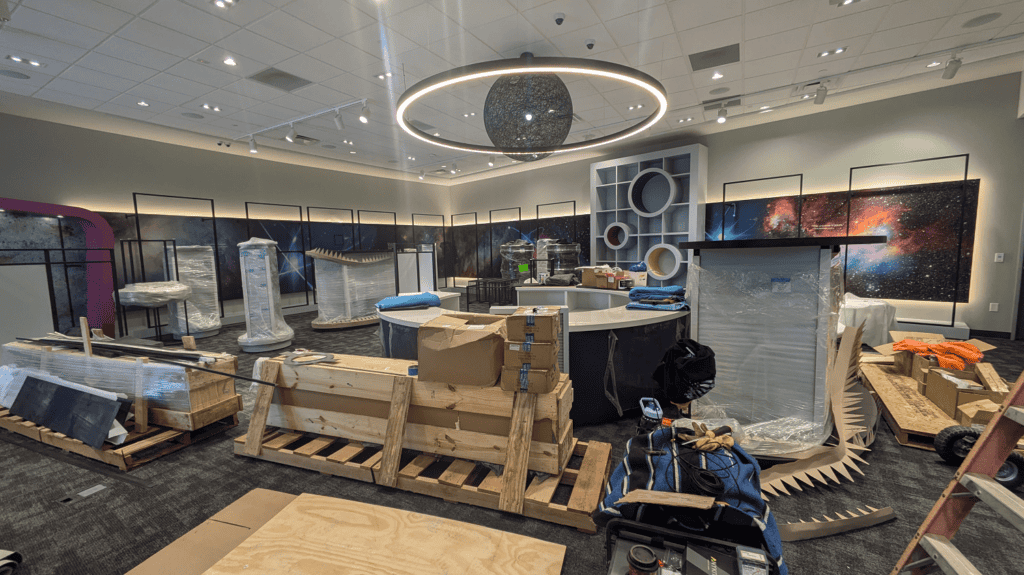
Christopher Fox Graham/Larson Newspapers
The entry to the three-story Discovery Center features a gift shop and the Planet X Café. Lowell signed a two-year lease on Oct. 15 with the popular Flagstaff restaurant Jitters Lunchbox to operate the 40-seat café, which is centered on a sandstone fireplace, with a menu of sandwiches, soup, salads and drinks. The cafe is open to the public without having to pay admission.
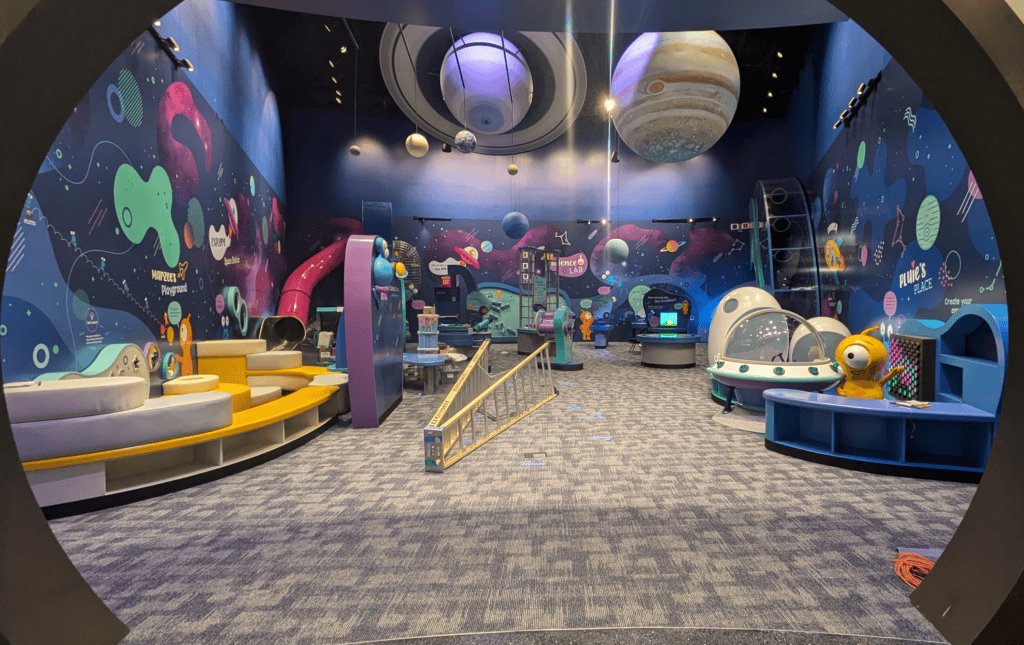
Christopher Fox Graham/Larson Newspapers
Past the ticket entry point is the Orbits Curiosity Zone, a large play area for preschoool to elementary school-age children, featuring friendly cartoon characters named after the planets.


The space is filled with games, activities and science exhibits, including magnets, pendulums, a scarf cannon, a play structure with a slide, a bounce area, an air-powered rocket launcher to demonstrate trajectories, a light table where kids can play with prisms, an infrared camera where children can see body heat on a monitor in real time and other exhibits designed to expose kids to basic science principles.

Christopher Fox Graham/Larson Newspapers


Suspended from the ceiling are giant spheres of the planets to scale, so visitors can visualize the size difference between the gas giants and the rocky worlds, including Pluto.

Christopher Fox Graham/Larson Newspapers

The adjacent Astronomy Gallery is designed for adults and older children, exploring more advanced topics like orbits, where the atoms in your body originated, the mixing of light wavelengths, spectroscopy, how sounds travel in space and on the planets, solar transit, how to track meteorites, known exoplanets and the effects of gravity.


Christopher Fox Graham/Larson Newspapers
The centerpiece of the facility is the large Lowell Universe Theatre, which can seat 180 people. The curved LED screen wraps 160 degrees around the audience and includes a fisheye lens on the ceiling.

Christopher Fox Graham/Larson Newspapers

Christopher Fox Graham/Larson Newspapers
The two screens combine to create an immersive experience for viewers. The second floor includes space for classrooms and conferences and a large exhibition hall that can be rented out for weddings, meetings, conventions and other events, with walls covered in paintings of the planets of our solar system.

Christopher Fox Graham/Larson Newspapers
Along the main staircase is a large three-story work of art being created jointly by Hopi and Navajo artists to depict their views of the cosmos, which is set to be completed in 2025.
The top floor of the facility is the open-air Dark Sky Planetarium. Because the building is one of the highest points in Flagstaff, atop Mars Hill, it offers a 360- degree view of the night sky with no obstructions from other buildings and amazing daytime views of the San Francisco Peaks.

Christopher Fox Graham/Larson Newspapers

Christopher Fox Graham/Larson Newspapers
While an outdoor planetarium might seem foolish in Flagstaff, known for its cold and snow, the roof and the walkway are heated to melt snow accumulation, and each of the seats on the circular deck are all individually heated, so stargazers with jackets or a blanket and can enjoy the night sky even in the cooler months, Schindler said.
The planetarium also includes a large screen, allowing live educators to point at constellations in the skies above and then project close-up images of those stars, nebulae, exoplanets and other objects onto the screen.
Lowell History
In the 130 years since its founding, Lowell Observatory has grown from a single observatory to a major research institution responsible for discovering the recessional velocities of galaxies in 1914, showing that the universe is expanding.

Christopher Fox Graham/Larson Newspapers
Its astronomers have located, tracked and named asteroids, comets and exoplanets, found rings around Uranus, the first Trojan asteroid of Neptune, the three largest known stars and two additional moons of Pluto: Nyx and Hydra.
There are a dozen telescopes at Lowell and at Lowell-owned facilities around the state, such as the state-of-the-art Lowell Discovery Telescope east of Sedona and the Verde Valley near Happy Jack and three specialized research telescopes at Anderson Mesa Station near Lake Mary.
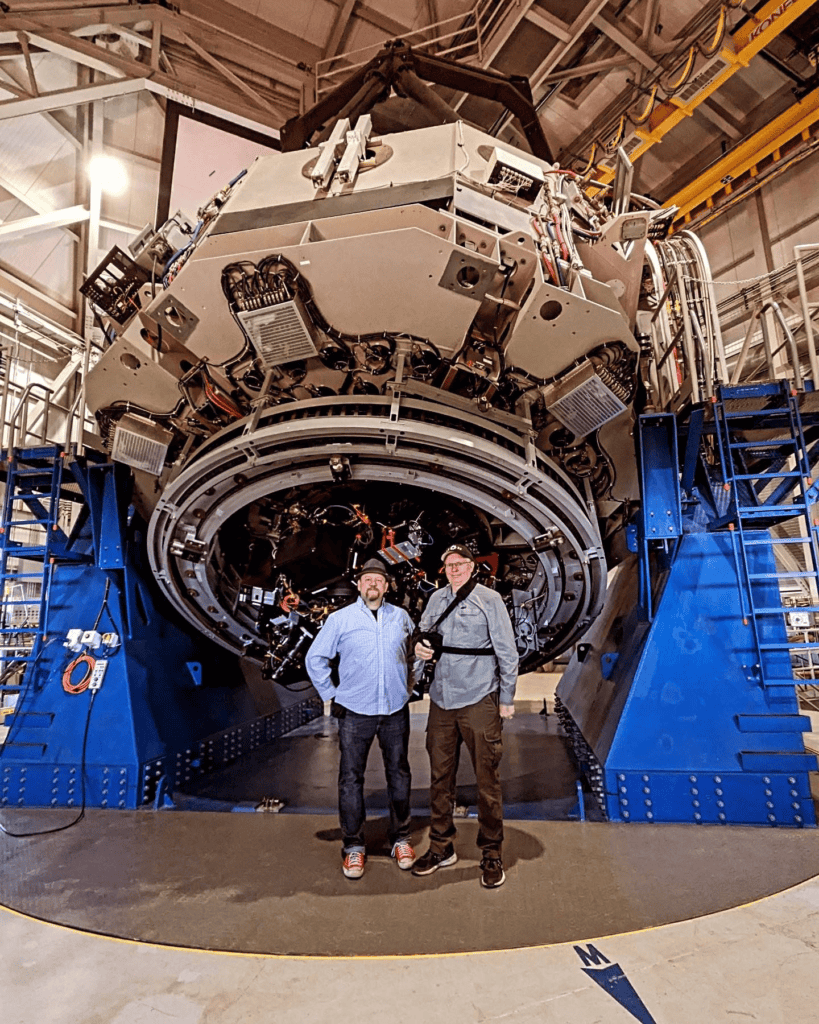
Christopher Fox Graham/Larson Newspapers
While many of the older telescopes at the observatory are now outdated and used for public education, there are several that are still actively used for research, in both the optical spectrum and at other wavelengths.
Yet Lowell Observatory is best known as the site from which Pluto was discovered in 1930.
Clyde Tombaugh Finds Pluto
Mathematician and astronomer Percival Lowell established the observatory on May 28, 1894, initially to study Mars and the possibility of intelligent life there after astronomer Giovanni Schiaparelli discovered apparent “canals” on Mars in 1877.

Christopher Fox Graham/Larson Newspapers
Later observations determined that the canals were a combination of optical illusions and naturally-formed passages on the planet’s surface.
Lowell also turned his focus toward finding “Planet X,” a hypothetical planet beyond the orbits of Uranus and Neptune, the existence of which would explain apparent perturbation discrepancies in the orbits of the two giant planets.

Lowell suddenly died in 1916, and work on locating the planet halted until 1925. Then-Observatory director Vesto Melvin Slipher turned over the planet-hunting duties to then-22-year Clyde Tombaugh, a Kansas farm boy who Slipher had hired after Tombaugh impressed him with his amateur astronomical observations and handmade telescopes.
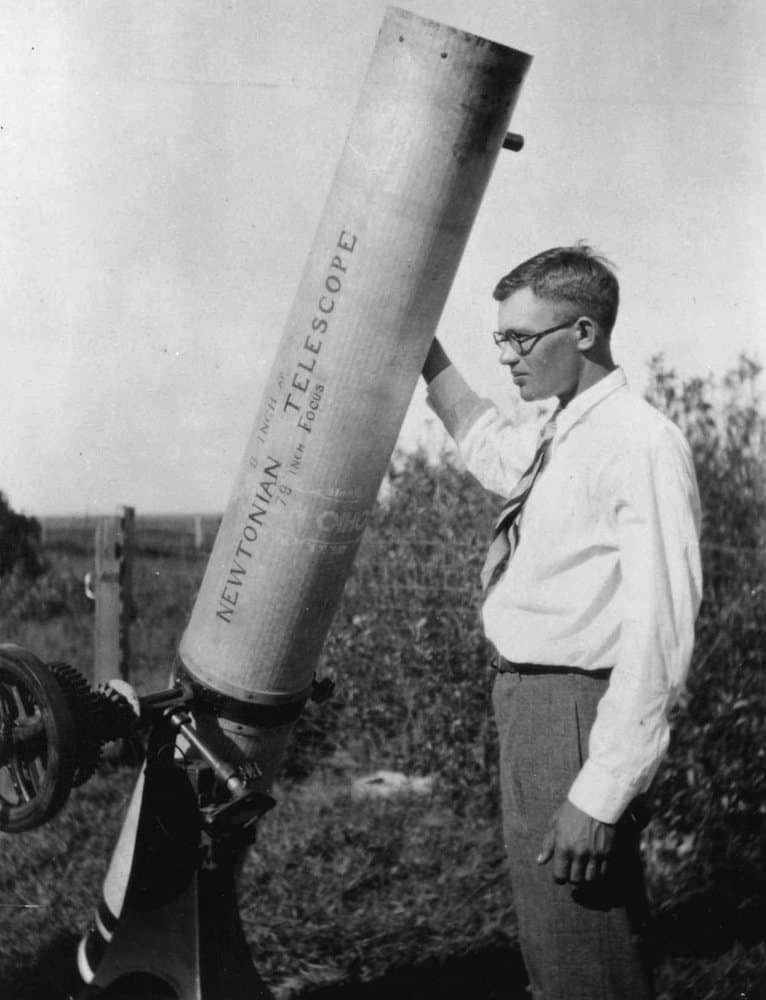
According to Schindler’s book “Historic Tales of Flagstaff,” Tombaugh worked in the Slipher Building at the observatory, taking photos of the night sky, looking for Lowell’s theoretical ninth planet.
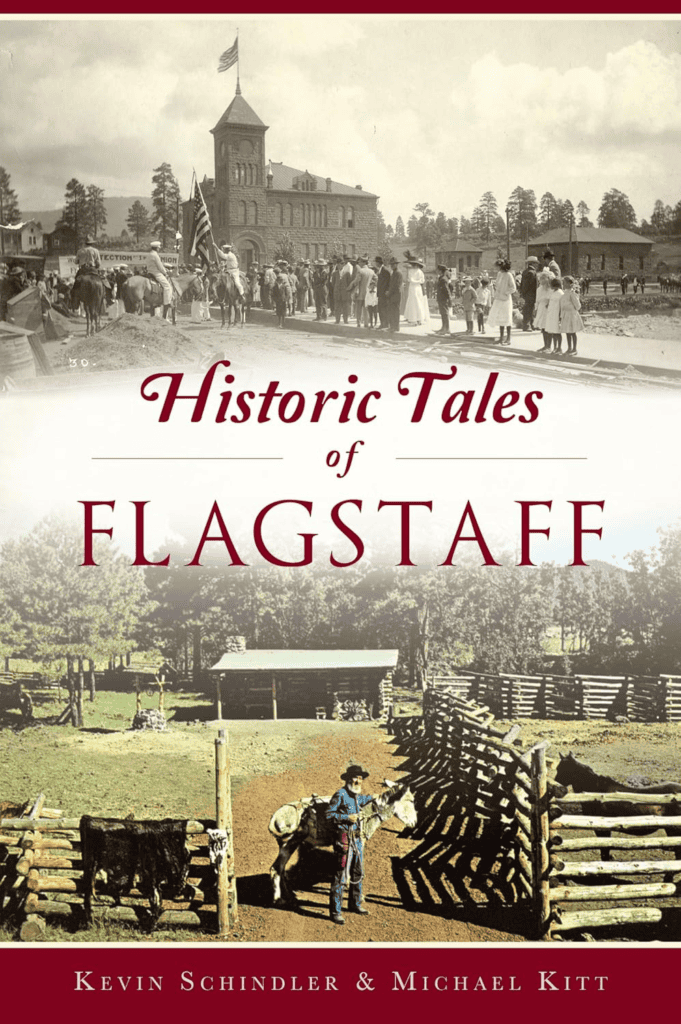
Tombaugh used a “blink comparator to look at every image from one plate to the other and see if any of the stars had changed position,” Schindler wrote. On Tuesday, Feb. 18, 1930, Tombaugh found the predicted planet during a marathon four-hour comparator session, and had astronomer Carl Lampland and Slipher verify his work.

Slipher directed him to take photos again that night to confirm the anticipated location.
With cloud cover in the early evening, Tombaugh went to the Orpheum Theatre to watch Gary Cooper in the film “The Virginian,” Schindler wrote, but when he left, the skies were still overcast. Tombaugh returned to the observatory to wait.

When the skies cleared around 2 a.m., he took more photos. For the next three weeks, Tombaugh and his colleagues studied the photographs and on March 13 — Lowell’s 75th birthday — Slipher telegraphed the Harvard College Observatory, notifying them they had discovered a planet.
The discovery turned Lowell Observatory from a simple telescope facility in an obscure town in Northern Arizona into a worldwide phenomenon.

Venetia Burney, an 11-year-old girl in Oxford, England, suggested the name Pluto, which her grandfather’s astronomy professor friend, Herbert Hall Turner, cabled to his Lowell colleagues on March 16, 1930. Pluto is the Latin god of the underworld, one of the sons of Saturn like Jupiter and Neptune, and the name also honored Lowell — its first two letters were his initials, P and L, which were combined to form the planet’s official symbol.
On May 30, 1930, the Coconino Sun newspaper reported “New Planet gets Name of Pluto,” which has since been forever tied to the city of Flagstaff and Northern Arizona.

Pluto was determined in 1978 to be too small to cause Uranus’ and Neptune’s perturbations, suggesting there might be another planet beyond it, but measurements made in the 1990s from data collected the Voyager 2 spacecraft found that irregularities in Uranus’ orbit were actually due to a slight overestimation of Neptune’s mass.
Pluto was demoted to the status of a “dwarf planet” by the International Astronomical Union on Aug. 24, 2006, but Arizona Gov. Katie Hobbs signed a bill on April 6, 2024, making Pluto the official state planet.
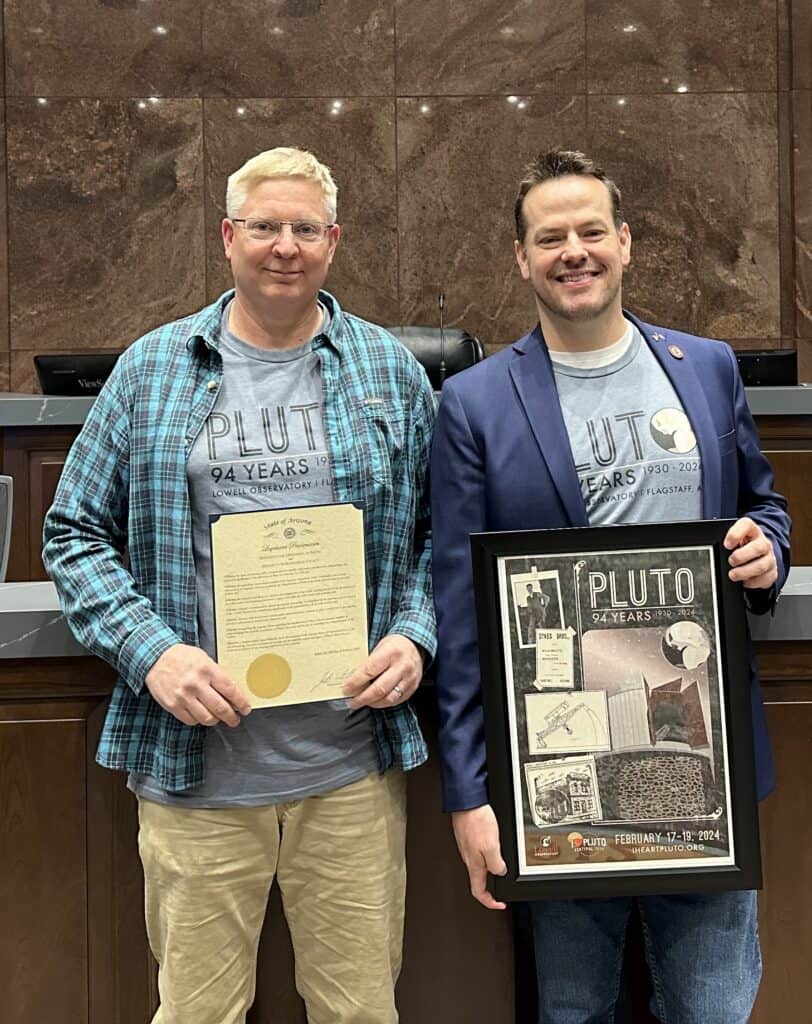
Photo courtesy of Kevin Schindler
Giovale Open Deck Observatory
GODO is a public observing plaza, named for longtime Lowell Observatory philanthropists John and Ginger Giovale, that features six advanced telescopes that collectively give visitors a viewing experience including rich star fields and planets full of color, nebulae and galaxies.

The 5.5-inch TEC Wide-Field Refractor gives guests wide-field views of star fields and celestial objects too large to fit in the field of view of most telescopes.

The 8-inch Moonraker Victorian Refractor is 10-foot-long, red-and-chrome steampunk-style telescope that echoes the original 1896 24-inch Clark Refractor.

The Starstructure Dobsonian Reflector is large 32-inch-diameter telescope mirror that gathers almost twice the amount of light as the 24-inch lens Clark Refractor and has a quartz mirror that keeps its shape no matter how low the temperature may drop. The telescope’s large size means that galaxies, nebulae and star clusters appear very bright and can reveal a high degree of structural details.

The 16-inch Meade ACF Catadioptric Reflector uses two mirrors and a corrective lens optical path to fold the light path inside the telescope. The 40.64-cm length means it can view smaller objects like the details in gas giant planets, planetary nebulae, small star clusters and double stars.
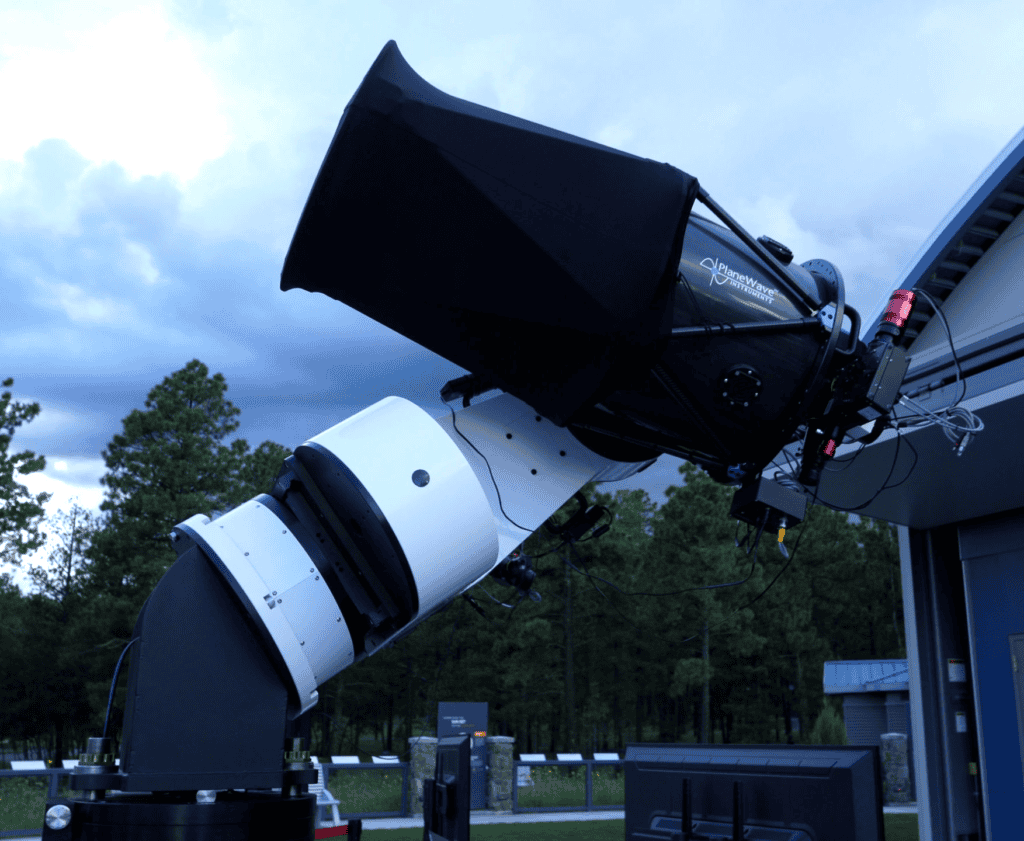
The 17-inch PlaneWave Corrected Dall-Kirkham Reflector is equipped with a Shelyak spectroscope — an instrument that separates light into its component wavelengths — that can show spectra from a variety of objects. It’s connected to a video monitor to show the frequencies of light emitted by a celestial object.
Astronomers use the light spectra from stars to determine a star’s temperature, chemical composition, relative motion, rotation, extended atmosphere if one exists and magnetic field. Like the Meade reflector, the PlaneWave uses two mirrors to fold the light path inside the telescope, plus a lens system to eliminate any aberrations. It is well-suited for astrophotography and instrumented observation, showing visitors how astronomers can do research.
For example, a hotter blue-white star spectrograph indicates that the star’s temperature is more than 9,000 degrees Kelvin, while a red-colored star is in the 4,500 degrees range. Our yellow sun is about 5,800 degrees. If two stars are orbiting in a binary system, the less bright star may alter the detected spectral lines rhythmically as it passes in front of its brighter partner.
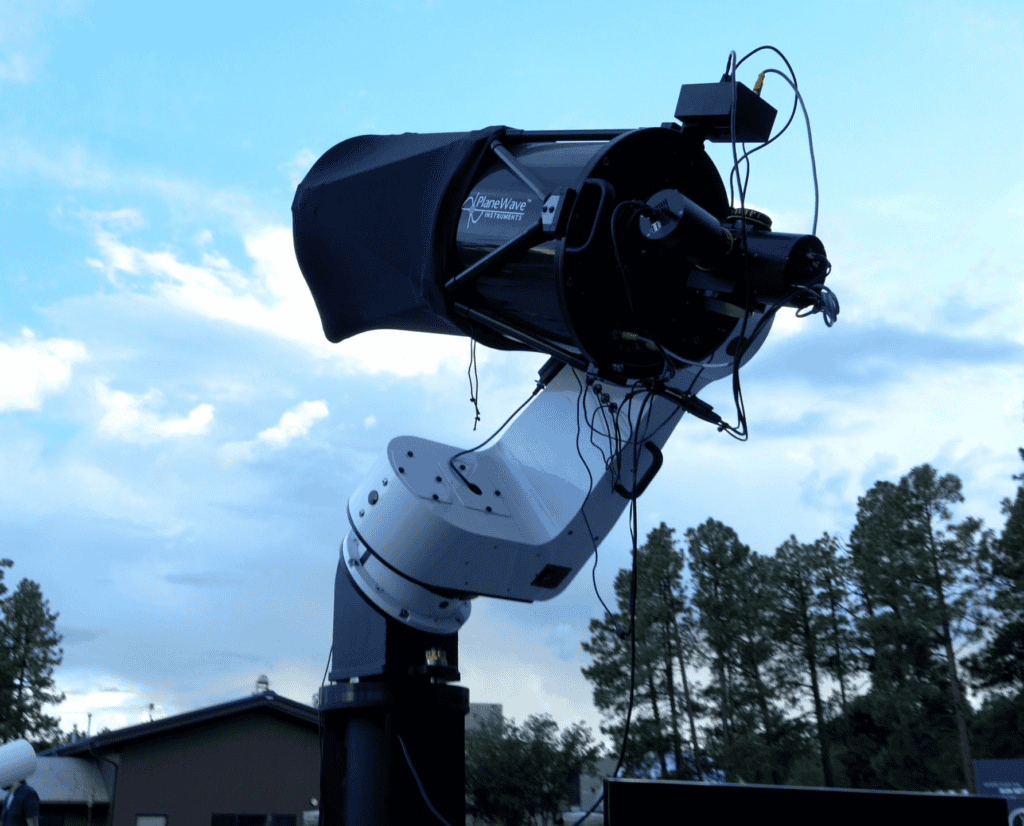
The 14-inch PlaneWave Corrected Dall-Kirkham Reflector is equipped with a MallinCam SkyRaider color video camera to show live, time-integrated images of objects that are otherwise difficult to see when looking through a telescope directly. The MallinCam rapidly stacks multiple images to show faint objects with more color than the human eye can see.


